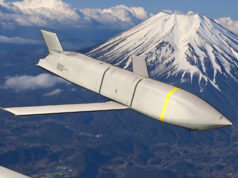BAE Systems welcomed the announcement that the Company has been selected to upgrade Australia’s long-range high frequency radar network.
The Jindalee Operational Radar Network (JORN) protects Australia’s coastal approaches through a network of three remote radars in Queensland, Western Australia and the Northern Territory. The company claims that the radars play a vital role in supporting the Australian Defence Force’s air and maritime operations, border surveillance, disaster relief and search and rescue operations.
The $1 billion upgrade will require over 500 highly skilled technicians and engineers working for BAE Systems and in the Company’s supply chain. Most will be based in the Edinburgh Defence precinct in South Australia, with remote site teams supporting the radars at Laverton (Western Australia), Longreach (Queensland) and Alice Springs (Northern Territory).
BAE Systems Australia today welcomed the announcement by the Minister for Defence, Senator the Hon Marise Payne and the Minister for Defence Industry, the Hon Christopher Pyne that the Company has been selected to upgrade Australia’s long-range high frequency radar network.
The Jindalee Operational Radar Network (JORN) protects Australia’s coastal approaches through a network of three remote radars in Queensland, Western Australia and the Northern Territory. The radars play a vital role in supporting the Australian Defence Force’s air and maritime operations, border surveillance, disaster relief and search and rescue operations.
The $1 billion JORN upgrade will require over 500 highly skilled technicians and engineers working for BAE Systems and in the Company’s supply chain. Most will be based in the Edinburgh Defence precinct in South Australia, with remote site teams supporting the radars at Laverton (Western Australia), Longreach (Queensland) and Alice Springs (Northern Territory).
BAE Systems Australia Chief Executive, Gabby Costigan, said:
“As a world leader in High Frequency radar technology, we are proud to have been selected to deliver an important upgrade to Australia’s most complex and critical Intelligence Surveillance and Reconnaissance capability.
Together with our partners, we are committed to ensuring a high level of Australian industry and academic participation in JORN. Our collaborative approach will allow for the application of rapidly developing technology to ensure Australia maintains a capability edge and superior situational awareness to ensure our northern approaches are secure.”








Good work BAE. Well done.
[…] post BAE Systems to upgrade Australia’s long-range radar network appeared first on UK Defence […]
Australian scientists and technicians have been steadily and unspectacularly evolving JORN since the original concept demonstrator phase in 1971.
The network can now monitor air and sea movements across 37,000 square kilometres, but since it bounces its signals off the ionosphere its range varies from 1,000 km to 3,000 km depending on ionospheric and weather conditions.
For comparison a similar array in the UK (assuming topography and atmospheric conditions lent themselves to a JORN style radar) could provide coverage west to Prague (on a bad day) and beyond Moscow (on a good day). Or north west to Greenland and south west to the Azores.
JORN uses a Frequency-Modulated Continuous Wave (FMCW) with its beam steered electronically, rather than mechanically, generating a new ionospheric map every 225 seconds.
High powered computers are necessary for JORN’s operation with the refinement of the software suite offering the most cost-effective upgrade path. The $1 billion upgrades to JORN under JP 2025 Phase 6 will focus on improving scan rates.
That would be east to Prague and Moscow
I used to work on JORN when it was called Jindalee Over the Horizon Network. Very remote, very hot in summer and very cold in winter. The amplifiers were a good source of heat in winter, needless to say summer was a bugger. Too many snakes, goanna’s and white tailed spiders for my liking though.